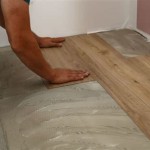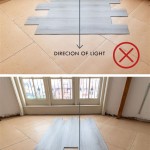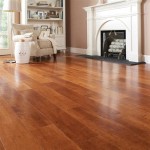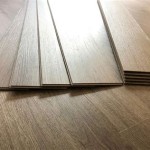A Guide To Ipe Hardwood Flooring Reviews
Ipe hardwood flooring, often referred to as Brazilian Walnut, stands as a premium choice in the world of flooring materials. Its exceptional durability, natural beauty, and resistance to decay make it a favored option for both residential and commercial applications. Understanding the nuances of Ipe, its pros and cons, and relevant reviews is crucial for making an informed decision when considering it for a flooring project.
This guide aims to provide a comprehensive overview of Ipe hardwood flooring, addressing its properties, comparing it with other hardwood options, and highlighting key factors to consider when evaluating Ipe flooring reviews. By examining these aspects, potential buyers can develop a clear understanding of whether Ipe hardwood flooring aligns with their specific needs and preferences.
Understanding Ipe Hardwood: Origin and Properties
Ipe, scientifically known as *Handroanthus spp.*, originates from South and Central America. The tree thrives in tropical climates, contributing to the wood's dense and resilient nature. This density is a defining characteristic, giving Ipe its exceptional hardness and resistance to wear and tear.
One of the most notable properties of Ipe is its Janka hardness rating. The Janka hardness test measures the force required to embed a steel ball into a piece of wood. Ipe consistently scores high on this scale, typically ranging from 3,680 to over 4,000, significantly higher than other popular hardwoods like oak or maple. This high rating translates to superior resistance to dents, scratches, and impacts, making Ipe ideal for high-traffic areas.
Beyond its hardness, Ipe exhibits remarkable resistance to decay, insects, and moisture. This inherent durability stems from the wood's dense structure and natural oils, which act as preservatives. As a result, Ipe requires minimal maintenance compared to other wood flooring options and is suitable for both interior and exterior applications. Its resistance to moisture also makes it a viable option for bathrooms and kitchens, although proper sealing and installation are still essential to prevent water damage.
Aesthetically, Ipe hardwood boasts a rich, dark brown color with subtle variations and figuring. The grain patterns are often interlocked, adding character and visual interest to the flooring. While the color may vary slightly depending on the specific tree and region of origin, Ipe generally offers a sophisticated and elegant appearance.
The density of Ipe also affects its workability. Cutting, drilling, and fastening Ipe can be more challenging than with softer woods. Pre-drilling is typically required to prevent splitting, and specialized tools and techniques may be necessary for successful installation. This factor is important to consider when factoring in installation costs, as professional installation is often recommended to ensure proper execution.
Comparing Ipe to Other Hardwood Flooring Options
Several factors differentiate Ipe hardwood flooring from other popular hardwood options. Understanding these distinctions is critical for making an informed decision based on individual needs and priorities.
Compared to oak, a common and relatively affordable hardwood, Ipe offers significantly greater durability and resistance to wear. Oak's Janka hardness rating is typically around 1,290, far lower than Ipe's. While oak is suitable for many residential applications, Ipe provides superior performance in high-traffic areas or homes with pets and children. Oak is also more susceptible to moisture damage and requires regular sealing and maintenance.
Maple, another popular hardwood choice, has a Janka hardness rating of approximately 1,450. While harder than oak, it still falls short of Ipe's exceptional durability. Maple is often chosen for its light color and smooth grain, offering a different aesthetic compared to Ipe's darker tones. However, maple is also more prone to scratching and denting than Ipe, making it less ideal for demanding environments.
Exotic hardwoods like Brazilian Cherry (Jatoba) are often compared to Ipe. Brazilian Cherry boasts a Janka hardness rating of around 2,350, making it a durable option. However, Ipe still surpasses Brazilian Cherry in terms of hardness and resistance to decay. Brazilian Cherry is also known for its dramatic color change over time, darkening significantly with exposure to sunlight. Ipe, while also subject to some color change, tends to maintain its original hue more consistently.
Bamboo flooring, often marketed as an eco-friendly alternative, varies considerably in its properties. Strand-woven bamboo can achieve high Janka hardness ratings, sometimes exceeding Ipe's, but the overall quality and durability of bamboo flooring can vary significantly depending on the manufacturing process. Bamboo is also more susceptible to moisture damage than Ipe and may require specialized installation techniques.
The cost of Ipe hardwood flooring is generally higher than most domestic hardwood options like oak or maple. The increased cost reflects Ipe's superior properties, its limited availability, and the higher labor costs associated with its installation. However, the long-term durability and low maintenance requirements of Ipe can offset the initial investment over time.
Analyzing Ipe Hardwood Flooring Reviews: Key Considerations
When evaluating Ipe hardwood flooring, it is crucial to consider several key factors to discern the credibility and relevance of the reviews. Not all reviews are created equal, and a discerning approach is necessary to extract valuable insights.
One of the first aspects to examine is the source of the review. Reviews from reputable flooring retailers, professional contractors, and trusted consumer review websites are generally more reliable than anonymous postings on less-established platforms. Verify the legitimacy of the source and consider its potential biases. For example, a review on a contractor's website might be biased towards a particular brand or product.
Pay attention to the specificity of the review. Vague or generic comments are less helpful than reviews that provide specific details about the reviewer's experience. Look for reviews that mention the type of Ipe flooring (solid or engineered), the installation process, the performance of the flooring under specific conditions (e.g., high traffic, exposure to moisture), and any challenges encountered.
Consider the timeline of the review. Reviews written shortly after installation may not reflect the long-term performance of the flooring. Look for reviews from individuals who have lived with the Ipe flooring for several years, as these reviews are more likely to provide insights into its durability, maintenance requirements, and overall satisfaction over time.
Look for common themes or patterns in the reviews. If multiple reviewers consistently report similar experiences, such as ease of installation, exceptional durability, or challenges with staining or finishing, this pattern may indicate a genuine strength or weakness of the product. However, be mindful of potential biases or coordinated campaigns that could artificially inflate or deflate the ratings.
Assess the reviewer's expertise and knowledge. Reviews from individuals with prior experience installing or maintaining hardwood flooring are often more informative than those from novice homeowners. Consider the reviewer's credentials and the level of detail they provide in their assessment.
Examine both positive and negative reviews. While positive reviews can provide reassurance and build confidence, negative reviews can highlight potential drawbacks and areas of concern. Pay attention to how the manufacturer or retailer responds to negative reviews, as this can indicate their commitment to customer satisfaction and product quality.
Consider the environmental impact of Ipe. Sourcing practices can vary, and some Ipe may be harvested unsustainably. Look for Ipe flooring certified by organizations such as the Forest Stewardship Council (FSC), which ensures that the wood is harvested from responsibly managed forests. This certification can mitigate concerns about deforestation and promote environmentally sound practices.
Finally, remember that reviews are subjective and reflect individual experiences. What works well for one person may not be suitable for another. Consider your specific needs, priorities, and budget when evaluating Ipe hardwood flooring reviews. Consulting with a professional flooring contractor or designer can provide personalized guidance and help you make the best decision for your project.
By carefully analyzing Ipe hardwood flooring reviews and considering these key factors, potential buyers can gain a more comprehensive understanding of the product's strengths, weaknesses, and suitability for their specific applications. This informed approach will lead to higher satisfaction and a more successful flooring project.

Ipe Hardwood Flooring A Durable Unique Choice

10 Problems With Ipe Decking You Should Know About

Ipe Brazilian Walnut Hardwood Flooring Spotlight

Ipe Brazilian Walnut Wood Properties Uses Facts

Ipe Vs Composite Camaru And Other Hardwoods

Ipe Brazilian Walnut Hardwood Flooring Spotlight

10 Problems With Ipe Decking You Should Know About

5 Ipe Brazilian Walnut Flooring Unfinished

10 Problems With Ipe Decking You Should Know About

The Deck Handbook Part 3 Exotic And Imported Wood For Decks
See Also







